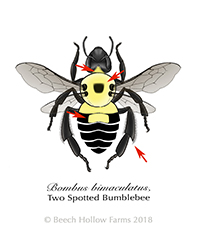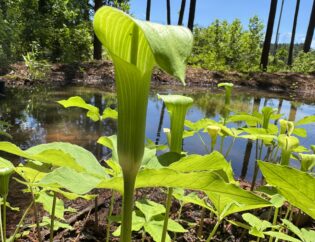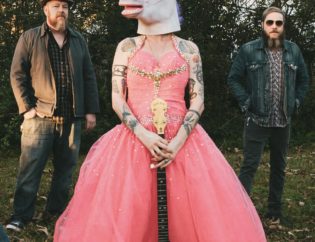
Bumblebee ID & Survey PDF:
Welcome! We are glad you are here to read about the SE Bumblebee Survey Activity! Why should you do this? There are a lot of reasons, we can give you three quick reasons right here:
1.) Bumblebees and other pollinators are important. Pollinators put all of our fruit and vegetables on the dinner table. Humans still rely on pollinators for 30% of our diet: green beans, squash, oranges, strawberries, chocolate, and coffee, the list of foods goes on and on. Although, during daily life checking on smartphones, we may think we are “apart from” “nature,” the opposite is true: we are still very dependent upon natural systems. Can’t eat without nature!
2.) Science is fun, and Citizens Science projects are educational! Learning and recording your observations about the plants and nature in your park or garden, is rewarding; you will learn new details about your local ecosystem. Uploading your observations and pictures  to a Citizen Science website run by scientists is exciting; you are helping scientific experts with your information. Your carefully collected observations added to all of the other observations from other citizens helps research science move forward. How great can learning get when you are going outside to hang out and observe pollinators on some flowers?
to a Citizen Science website run by scientists is exciting; you are helping scientific experts with your information. Your carefully collected observations added to all of the other observations from other citizens helps research science move forward. How great can learning get when you are going outside to hang out and observe pollinators on some flowers?
3.) Why are we counting and identifying the bees? We still need pollinators to help us make our food, but insect populations, and especially worrying, pollinator populations, are declining across the world. If there is an area with good pollinator and bee populations, we all need to know about it! If a bee population is in decline or missing, all of us need to know about it! It’s all about the Strawberries! Chocolate! Zucchini!
About this pdf: The first page of this pdf provides an inexpensive and easy to carry schematic ID that highlights several of the key characteristics for seven of the Southeast’s most common bumblebees. The second page of this pdf has general information about the likely habitats of these bees, their preferred nest locations and floral foraging preferences. The third page has a data entry form to help you collect and organize your observations.
How to use this Bumblebee ID Card:
Print out an ID card, with the information page on the back, a data collection card, and read the data collection instructions.
Select one method of data collection that you will follow. For the 5 minute sitting observations the observer will sit at one cluster of flowers for 5 minutes, count bee visits to each flower in their chosen cluster. If the observer can take pictures of the bees, those provide important information that can be verified at a few sites.
The 15 minute walking observation is more complex, and requires more set up time. The observer should measure 100 feet of transect (a straight predetermined path through the landscape) next to or in a bee pasture or garden. The measured transect should be flagged both at the beginning and end of 100 feet, and participants would time their walk to go from one end of the transect to the other within 15 minutes. Very detailed directions for a 15 minute walking observation are available at bumblebeewatch.org. If you do not have 100 continuous feet of transect along a bee meadow or garden, there are organized ways to break up the transects that are described at the bumblebeewatch website.
The following three websites have experts who will ID clear photographs of bees that are submitted to them: The site Bug Guide will verify insect and bee ID in clear pictures. The Great Sunflower Project allows an observer to upload up to 3 pictures of each bee, to increase accuracy of bee identification. Clear photos of the bees also provide important information for Bumblebee Watch. The additional information about the flower being visited, the location, time, temperature, and date, is also important. Information from five minute sitting observations may be uploaded at The Great Sunflower Project. Information from 15 minute walking observations may be uploaded at Bumblebee Watch.
Here is the form to download the free SE Bumblebee Survey pdf:
Oops! We could not locate your form.
Information Deep Dive:
For those of you who are curious about some of the reasons behind the decline, here is some more information and source material:
Some reasons for pollinator decline:
Climate Change: An increase in global temperatures by 3.2 degrees Celsius by 2100 CE will affect 49% of insect species with a projected 50% reduction in their habitat or range. (Article/source: http://science.sciencemag.org/content/360/6390/714.full)
Loss of habitat due to farming/corporate agriculture/monoculture practices and other human activity/development. (Article/source: http://science.sciencemag.org/content/353/6296/288/tab-pdf )
The pesticide use by agribusiness in the EU and the USA has resulted in a massive die off of important ecological “actors” insects, pollinators and otherwise. An article about bees and pesticides here: Neonicotinoids and bees
The effect of this is creeping upward into the larger species that are dependent upon them: Insect populations in the EU have declined by 76%. (Article/source: http://journals.plos.org/plosone/article/file?id=10.1371/journal.pone.0185809&type=printable)
Other animals directly or indirectly affected by above factors:
Songbird populations in France have declined by 70% : An article in the Guardian (https://www.theguardian.com/world/2018/mar/21/catastrophe-as-frances-bird-population-collapses-due-to-pesticides)
Even aquatic systems are not immune to the effects of our introduced chemical compounds. Aquatic insects and arthropods are being affected by neonicotinoid compounds leaching into surface waters (a broadly used class of pesticide associated with many problems in global insect decline.) http://www.xerces.org/wp-content/uploads/2016/10/XercesCAAquaticNeonics_Dec2016_Final.pdf
Why worry about terrestrial and aquatic insects and arthropods? Those organisms provide food to freshwater fish as well as many birds. We humans also eat fish. Many river systems drain into the oceans. Who knows if the compounds will survive in the complex chemistry of ocean water? I hope they don’t. Point being: we as humans are all a part of this. The bottom of the food web supports the organisms at the top. We are at the top, and there will be no foundation to support us. Pollinators go away, veggies and fruits go away.









